
- For PC
- For MAC
- For Linux
- OS: Windows 7 SP1/8/10 (64 bit)
- Processor: Dual-Core 2.2 GHz
- Memory: 4GB
- Video Card: DirectX 10.1 level video card: AMD Radeon 77XX / NVIDIA GeForce GTX 660. The minimum supported resolution for the game is 720p.
- Network: Broadband Internet connection
- Hard Drive: 17 GB
- OS: Windows 10/11 (64 bit)
- Processor: Intel Core i5 or Ryzen 5 3600 and better
- Memory: 16 GB and more
- Video Card: DirectX 11 level video card or higher and drivers: Nvidia GeForce 1060 and higher, Radeon RX 570 and higher
- Network: Broadband Internet connection
- Hard Drive: 95 GB
- OS: Mac OS Big Sur 11.0 or newer
- Processor: Core i5, minimum 2.2GHz (Intel Xeon is not supported)
- Memory: 6 GB
- Video Card: Intel Iris Pro 5200 (Mac), or analog from AMD/Nvidia for Mac. Minimum supported resolution for the game is 720p with Metal support.
- Network: Broadband Internet connection
- Hard Drive: 17 GB
- OS: Mac OS Big Sur 11.0 or newer
- Processor: Core i7 (Intel Xeon is not supported)
- Memory: 8 GB
- Video Card: Radeon Vega II or higher with Metal support.
- Network: Broadband Internet connection
- Hard Drive: 95 GB
- OS: Most modern 64bit Linux distributions
- Processor: Dual-Core 2.4 GHz
- Memory: 4 GB
- Video Card: NVIDIA 660 with latest proprietary drivers (not older than 6 months) / similar AMD with latest proprietary drivers (not older than 6 months; the minimum supported resolution for the game is 720p) with Vulkan support.
- Network: Broadband Internet connection
- Hard Drive: 17 GB
- OS: Ubuntu 20.04 64bit
- Processor: Intel Core i7
- Memory: 16 GB
- Video Card: NVIDIA 1060 with latest proprietary drivers (not older than 6 months) / similar AMD (Radeon RX 570) with latest proprietary drivers (not older than 6 months) with Vulkan support.
- Network: Broadband Internet connection
- Hard Drive: 95 GB
|
|
Attack Single
British Power Boats seventy-one-foot-six MGBs. By John Moore
The Royal Navy started the war with a small number of high-speed Motor Anti-Submarine Boats (MASB) made by British Power Boats but after the fall of France there was little need for coastal anti-submarine work, and E-boats based in occupied territories presented a greater threat. The MASBs were therefore re-designated as Motor Gun Boats (MGB) to combat the E-boats. Armament was a major issue at first; only three of the boats of the 6th MGB Flotilla under Lieutenant Commander Robert Hichens had a 20mm cannon, the others had nothing heavier than .303 machine guns, some mounted in Boulton & Paul aircraft turrets (not designed for naval use the poor gunners were sealed in their turrets with waterproof tape to protect the electrics).
Armament was slowly upgraded, and Hichens moved to the 8th MGB Flotilla with new, slightly larger seventy-one-foot-six boats with heavier weapons: a 2 pdr pom-pom forward and twin 20mm cannon aft, well suited to tackling E-boats. They were less than ideal against larger targets, though, and Hichens pressed hard for his boats to carry lightweight torpedoes. In the meantime, though, they did have one heavier weapon from their MASB days: depth charges. A depth charge attack on a ship was a risky proposition, requiring the MGB to pass within mere feet of its target at high speed to escape from the blast, but this did not deter spirited MGB captains.
In October 1942 four MGBs from the 8th Flotilla spotted four German trawlers and executed "Attack Single", a planned manoeuvre in which three MGBs engaged the trawlers with guns from one side, drawing attention away from the fourth making a depth charge attack from the other side. George Duncan in MGB 78 dropped his depth charge and sank one of the trawlers but Duncan was hit and killed by return fire from the trawlers, and the rest of the crew were captured after being forced to abandon MGB 78 when it struck a sandbank. The MGBs started to receive torpedoes in July 1943, though Hichens did not survive to see the benefits having been killed in action in April.
Sources:
“Gunboat Command: The Biography of Lieutenant Commander Robert Hichens”, Anthony Hichens
Tiger, Tiger, Burning Bright
S-130, S-100 class E-boat. By John Moore.
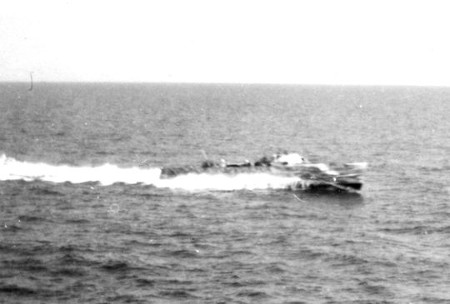 |
The Allies were conducting assault force landing training exercises at Slapton Sands in Start Bay and nearby Tor Bay in Great Britain in preparation for the Normandy landings. As training Landing craft slowly steamed towards the beach, 9 German Schnell Boots of the 5th and 9th flotillas out of cherbourg were rocketing in on their location at 36 knots, entering Lyme Bay while sighting the allied ships, they formed attack formation and engaged the helpless LST's at 2AM but not before inflicting allied losses enroute to the larger LST's They managed to destroy a "tanker" and engaged a Mine sweeper with torpedoes, one of which hit.
On reaching the LST's, which were 120 metres long, the German attack boats caused widespread panic and chaos, some of the LST's firing upon each other with the end result being 6 Landing Ships being sunk or put out of action with a combination of torpedos, gunfire and friendly fire. The action worried Allied D-Day planners and the morale hit would have been so great that the losses from "operation tiger" were not tallied until D-day where they were added to the totals for the Normandy invasion.
Schnellboot S-130, an S-100 class boat, had an extraordinary career. Commissioned in 1943 she was part of this, one of the most notable S-boat engagements of the war, the attack on Exercise Tiger. A convoy of landing ships carried US men and vehicles to Slapton Sands, standing in for Utah beach, but the convoy had been spotted by Luftwaffe reconnaissance and S-130 and eight other S-boats under the command of Korvettenkapitän Bernd Klug were despatched to attack. Evading the defensive screen in the black of night, the S-boats located the convoy and closed in to launch torpedoes, sinking two landing ships and damaging another, making good their escape in the resulting confusion. 639 soldiers and sailors were killed, four times the losses of the actual attack on Utah beach in June.
S-130 survived the war, retreating east as the Allies advanced, harrying coastal targets along the way. After the surrender of Germany she was one of several S-boats taken into service by the Royal Navy for test and trial purposes, then returned to Germany and served in the "British Baltic Fishery Protection Service", a cover organisation set up by MI6 to gather intelligence on the Soviet Fleet and insert agents into the Baltic states. The German Federal Navy was reformed in 1956, and in 1957 S-130 returned to German service as a high-speed training vessel, finally retiring in 1991 after no less than 48 years. She was used as a houseboat for some time then purchased by Kevin Wheatcroft in 2009, and is currently being restored to her original 1943 condition.
Sources:
British Military Powerboat Team site; BBC News
Chariots of Fire
Fairmile D by Mark Barber.
The night of March 28th 1942 saw one of the most daring commando raids of the entire Second World War - Operation Chariot. The dry dock at St Nazaire on the west coast of France was targeted by the British Combined Operations Headquarters as it had the capacity to provide support for any German warship, even up to the gargantuan size of the notorious Tirpitz. The aging destroyer HMS Campbeltown, packed with explosives and British commandos, carried out a night crossing of the English Channel with the intention of ramming the dock gates at St Nazaire which the onboard explosives would later destroy. Accompanying the sacrificial destroyer were several smaller vessels - one of these was the MGB 314, a Fairmile D class Motor Gunboat.
MGB 314 would act as the headquarters vessel for the entire raid, but was initially towed by one of the force’s destroyers as she did not have the fuel to reach St. Nazaire and return. As the raiding force approached their target, MGB 314 assumed the lead position and motored to the front of the force. As the British vessels approached the German defenses shortly after midnight, a signal light demanded their identification. MGB 314 responded but the ruse did not work for long - within minutes the force was being fired upon by every available weapon at the harbour. MGB 314 kept up a steady stream of fire against German coastal positions and vessels as the British force closed with the harbour. Campbeltown achieved her mission and smashed into the dock gates as the commandos swept ashore and engaged in bitter fighting with the German defenders. MGB 314 drew alongside and the Commanding Officer of the British commandos, Lt Col Newman, leapt ashore to lead his men into action. Meanwhile the ranking naval officer, Cdr Ryder, also proceeded ashore to make sure the Campbeltown was securely stuck in place at the dock gates. He then returned to MGB 314, who was already recovering wounded sailors and commandos whilst engaging coastal gun positions.
With the raid a success, MGB 314 was one of the surviving vessels which withdrew under heavy fire - she was so badly damaged that she was later scuttled. At approximately midday, with some 40 senior German officers onboard to inspect the abandoned enemy ship, the explosives onboard Campbeltown detonated and destroyed the vital dock gates. Cdr Ryder was one of the men who was awarded the Victoria Cross for his part in the raid; another was Able Seaman William Savage, one of MGB 314’s deck gunners who died at his post whilst his accurate fire suppressed German gun positions during the retreat.
Sources:
https://www.victoriacrossonline.co.uk/william-a-savage-vc/4588162380
https://www.operation-chariot.org/mgb314.html
https://www.historylearningsite.co.uk/world-war-two/war-in-the-atlantic/the-1942-raid-on-st-nazaire/
https://www.combinedops.com/St%20Nazaire.htm
A Rescue under fire
E boats had been busy off the English coast one night on the 10th of September 1942 and three 70 foot MGBs, led by Lt. Horn; DSC, RN, had intercepted one of the E Boat groups as it retreated. A lengthy battle followed as the MGBs pursued the E boats eastwards across the North Sea.
By now it was getting light, and action damage had slowed up Horn’s gunboats, so that the quarry had been lost. The point at which they were about to make contact was evidently a rendezvous for the E boats and two additional German groups had joined their comrades. In daylight, the British boats sighted the enemy reckoning the odds were nine Scnellboots versus four British Fairmiles. Battle commenced once more and one of the British craft was hit in the engine room, it was immobilized and burning. Two more British boats were hit, although the enemy also appeared to have suffered major hits. A further group of E boats had now joined in the action, as about twelve of them were formed in a semicircle round the disabled MGB which was still firing back towards the Germans, the enemy remained four or five hundred yards away, but casualties were mounting. it was at this stage that one of the Allied boats decided to make a rescue bid. Under fire from twelve E boats at no more than 500 yards range in broad daylight, the boat came alongside the burning immobilized boat and took off most of the survivors - a couple of the crew being trapped behind fire in the wireless room. Thorpe, the commander of the rescuing craft, was awarded the DSO.for his boats gallant efforts.
With thanks to - World War Two - The War at Sea
https://www.39-45war.com/mgb.html
21st of July 1943 - Skirmish in the Azov Sea
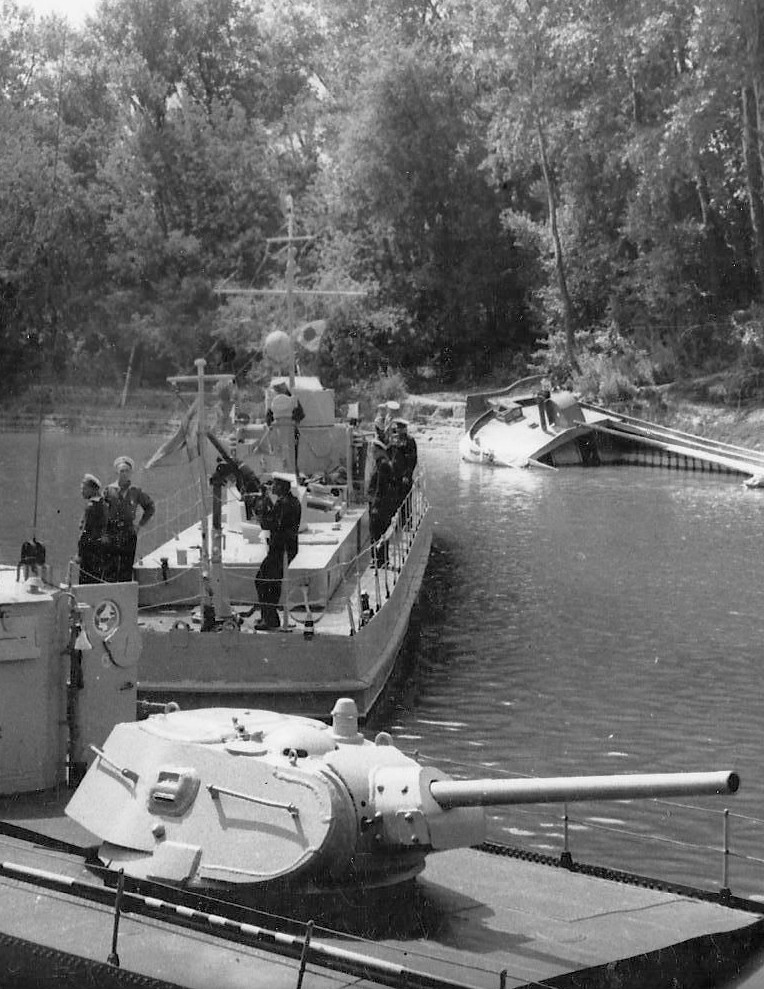 |
USSR Project 1124 Gunboats were used successfully and to great effect in the Crimea during the latter stages of World War II against naval forces from Germany, Italy and Romania.
The Germans had made a number of failed raids in the Primorsko Akhtari (Azov Sea): the coastal bombardment made by the Marine Artillerie Leichter gunboats(MAL’s) caused little damage. On the 21st of July 1943, the Germans dispatched the gunboats MAL-8 and MAL-11 with the auxiliary minesweeper R-166 to achieve results. The Soviets, however, were well prepared, at the beginning, N179, a small minesweeper, attempted to delay the enemy and successfully used up all her ammunition she had stored, suffering only minor damage with 1 wounded crew member.
Finally, the Soviets counter-attacked using a group of three 1124 class gunboats, accompanied by two MO class patrol boats as a defensive screen. During the battle, the Soviets suffered only light damage on the patrol boats whilst the BK-112, an 1124 Gunboat, had its guns put out of action.
The Germans retreated once more as the R-166 suffered at least 2 direct hits from the 76mm main guns mounted on the 1124’s causing heavy damage and 3 crew members incapacitated. MAL-11 was additionally lightly damaged with 2 wounded, giving victory to Soviets forces. During the entire encounter, both sides came away with gun damage due to excessive use, leaving us to imagine how fierce this battle must have been.
The War Thunder Team
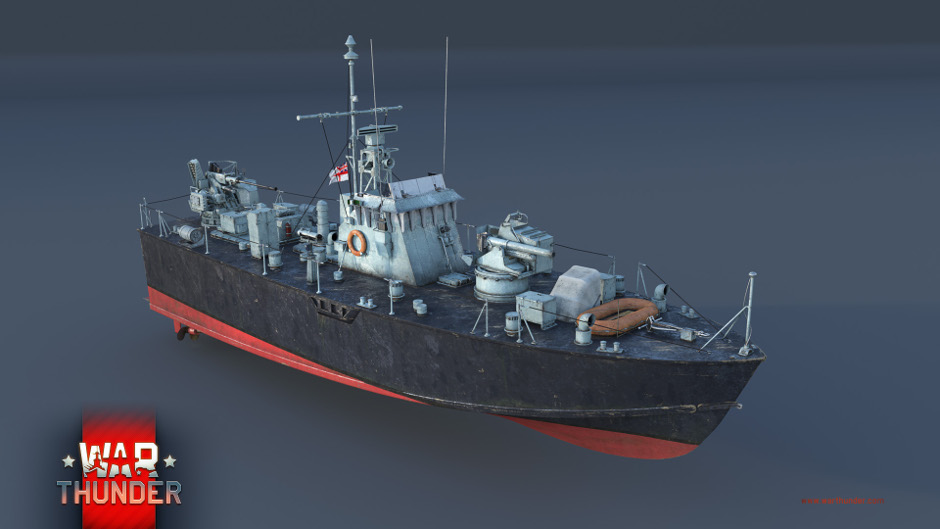
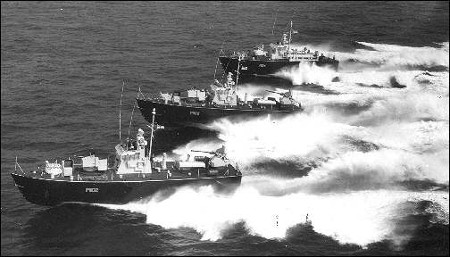
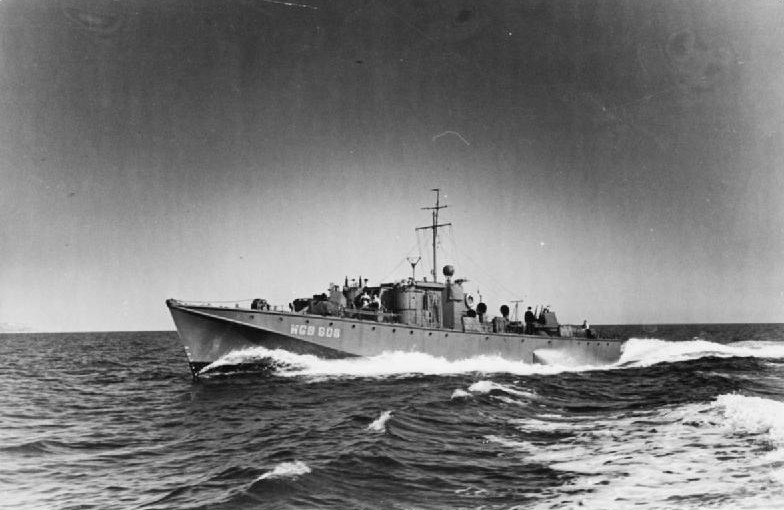
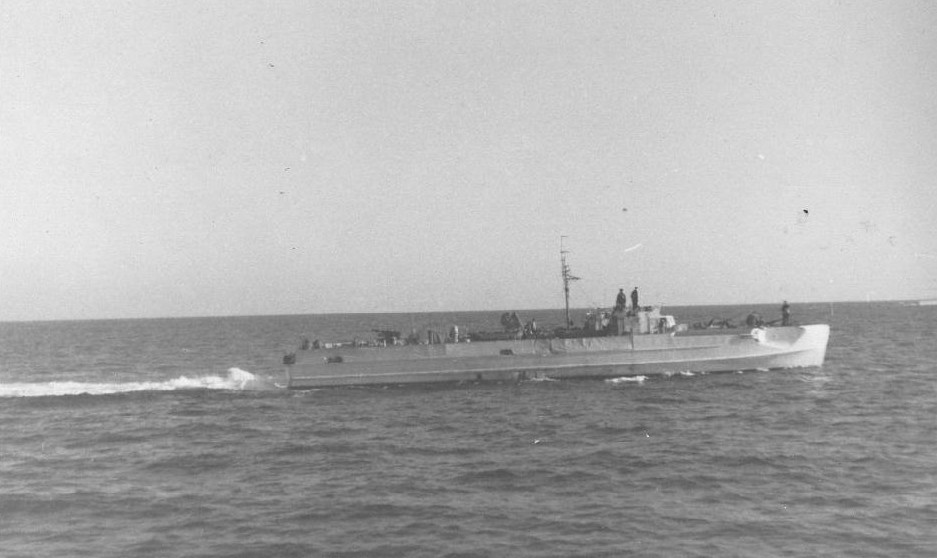




Comments (34)
Bit offtopic from ships but will the next Japanese tank devblog be the Ho-I by any chance xD
my quess is the red and white HO-HO-HO with Misile Reindeers
Stay tuned and follow devblog - it would be no surprise otherwise!
These series are pretty cool. Can't wait to try these boats out for myself!
I mean, can't wait to try these boats out for myself Soon™!
SgtSully, How Soon™ do you think?
when will war thunde navel strike come out if you know it and willing to tell every one can you plz send or commet back when it'll come out thats why im having so much fun cause i knew this update was being made thats why i havn't played this game i knew there where new updates plus i kind of suck at the game a little XD but it's just so much funnew while i know this update caould come out any day now
We will release it as soon as you will start to use punctuation marks :P :P :P Fallow our website, soon we will have more info :)
Stona_WT, XD. Good one. He does seem quite happy, and much spelling errors :P. But he is right, it is quite funny thinking about that the CBT could come any second. Can't wait.
Stop delaying this so much! I'm losing the hype for naval battles.
Explain to me how they are delaying it? They said the CBT would start at the end the year, that means it can start at 31/12/16 11:59PM and they will still be on time. Stop crying for no reason. The CBT will start when it's ready, we dont want it to be release now and then you come here crying about bugs.
shadowaffles, It's being delayed because it was going to happen Soon. And it didn't.
so are you going to give us bismark for naval fights :DDDD
better say yamato :)))
dont tell me you forgot what they said early on...
funner oops
These stories are like listening to uncle Albert from only fools and horses......during the war...
One question: is it possible that we might see hydrofoil technology in some of the boats? (perhaps at the later tiers) for anybody who does not know what this is: https://en.wikipedia.org/wiki/Hydrofoil
Hmmm not even that far fetched
Saw the first pic of the boat and said "Wtf is that?!" ITS A STUBBY BOAT
Cool!.